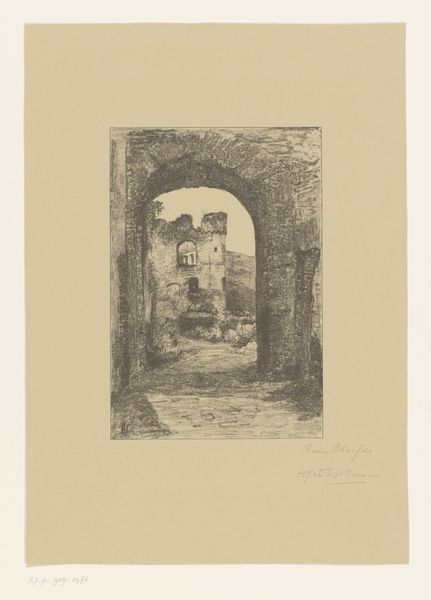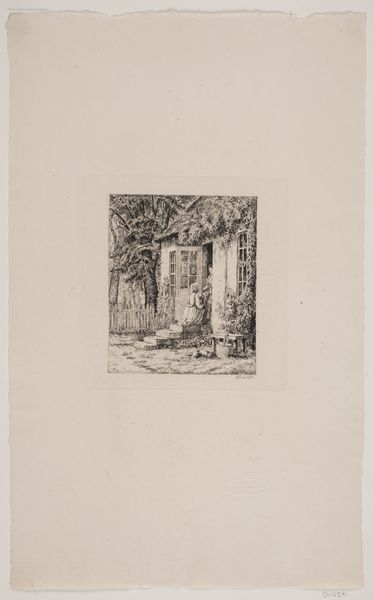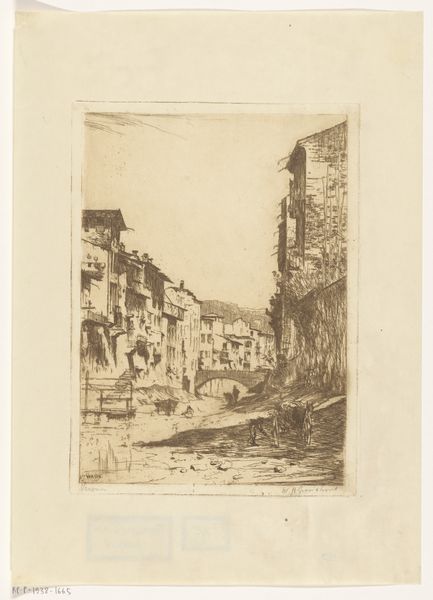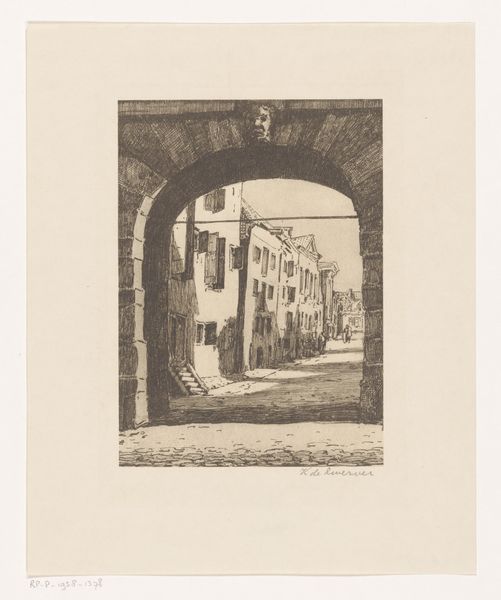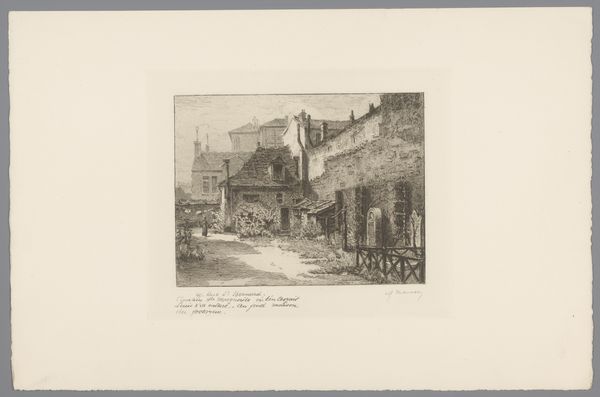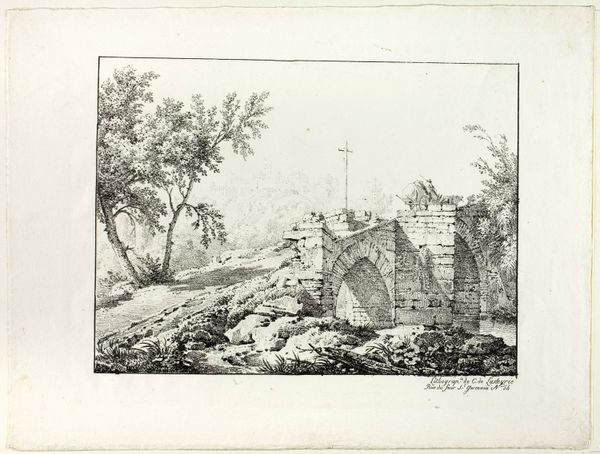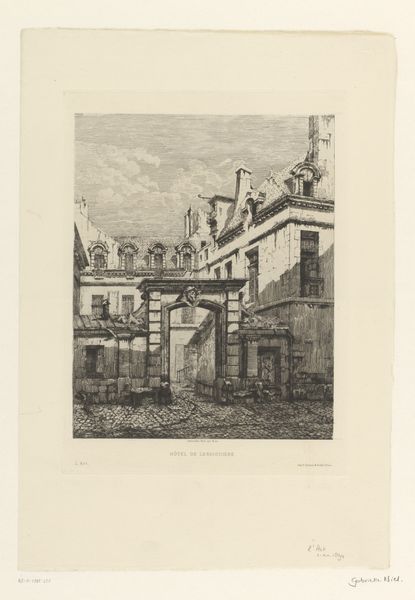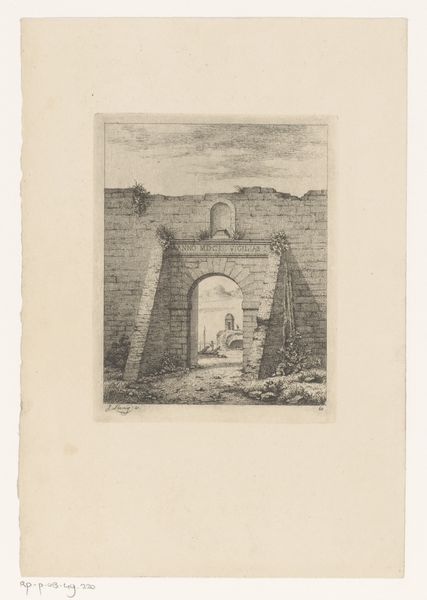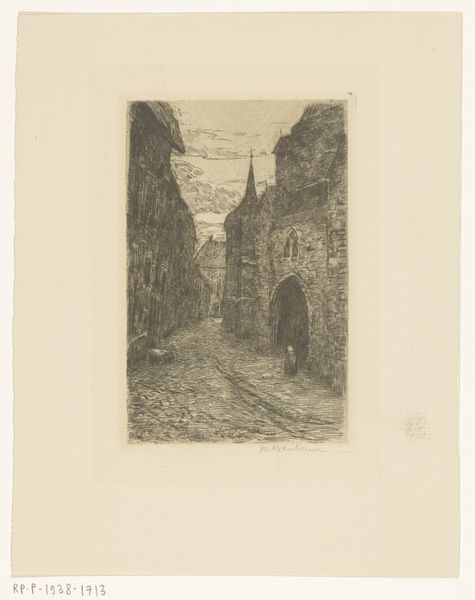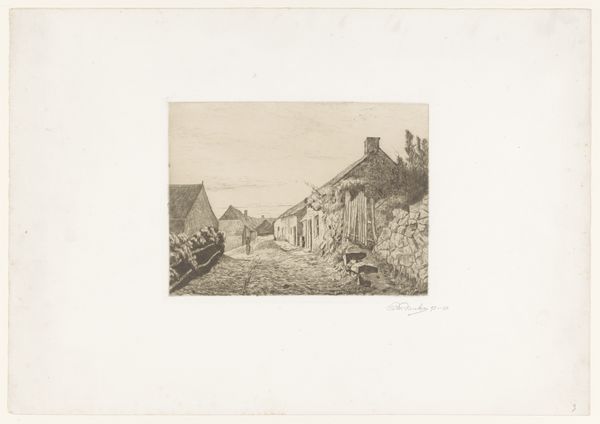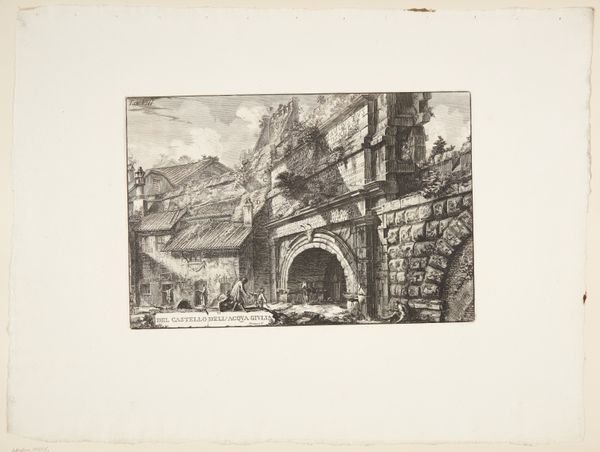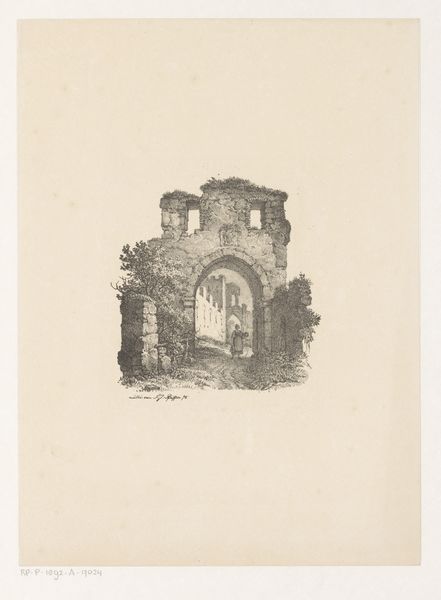
Kirkeruin på Grønland. Illustration til W.A. Graah. Undersøgelsesrejse til østkysten af Grønland 1832
0:00
0:00
print, etching, engraving
#
medieval
# print
#
etching
#
landscape
#
etching
#
history-painting
#
engraving
Dimensions: 190 mm (height) x 234 mm (width) (plademaal)
Curator: This etching by Oluf Olufsen Bagge, titled "Kirkeruin på Grønland. Illustration til W.A. Graah. Undersøgelsesrejse til østkysten af Grønland," dates to 1832. What's your initial impression? Editor: Haunting. There's a starkness in the image, an echoing emptiness amplified by the meticulous detail. I’m immediately drawn to how this ruin becomes a vessel for thinking about time, about colonial ventures and abandoned stories. Curator: Precisely. Note how the formal qualities – the stark lines, the geometric precision of the brickwork, the limited tonal range – create a sense of austere beauty. The architecture itself dominates. Bagge isn't just rendering a ruin; he's presenting a study in form and structure. Editor: I see the formal beauty, but I also see the silence. Greenland's eastern coast was, and continues to be, a site of complex power dynamics. This church, this ruin, isn't simply an aesthetic object. What did W.A. Graah's research entail? And for whom was this land a ruin? Curator: Graah's expedition sought to chart the uncharted. Bagge's work served as scientific documentation. Editor: Documentation for what purpose, though? It's important to consider the political dimension. These images provided information that enabled colonial incursions, right? This is not only about art history, it's about the narratives of exploration. And ultimately about extraction. Curator: Valid, certainly. But doesn’t the emphasis on pure form still communicate a timeless quality, devoid of immediate context? Editor: I argue against divorcing form from content in this instance, because it normalizes a history fraught with inequality. The ruin signifies not only a bygone era, but also ongoing neocolonial exploitation. We cannot forget whose stories are centered, whose labor built that very structure we observe. Curator: I suppose, ultimately, we’re left contemplating not only the aesthetic beauty of this abandoned structure but also the weight of history it carries and the continuing effects. Editor: Right. Bagge's image then becomes a catalyst. Hopefully inviting necessary, challenging discussions regarding the entangled dynamics between colonial ambitions, land use and preservation and erasure.
Comments
No comments
Be the first to comment and join the conversation on the ultimate creative platform.
